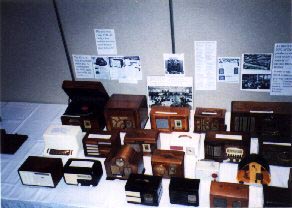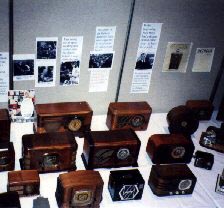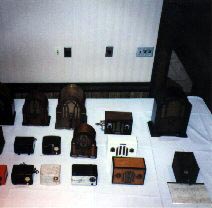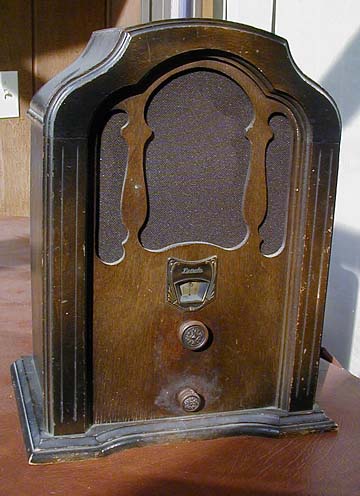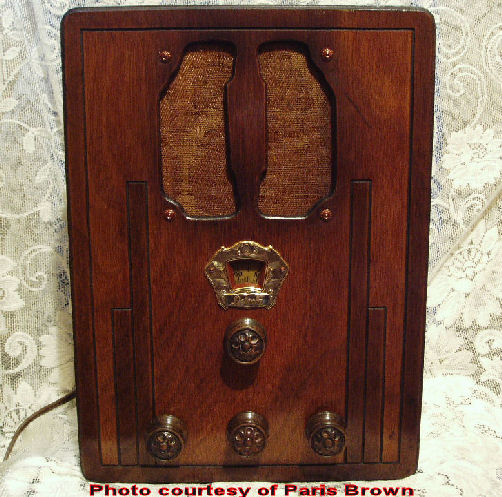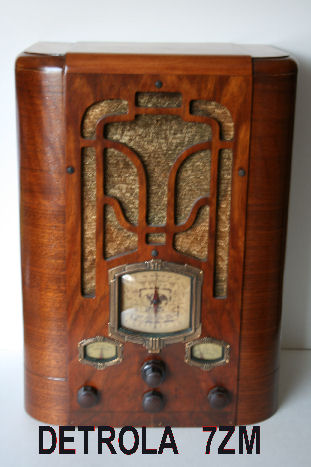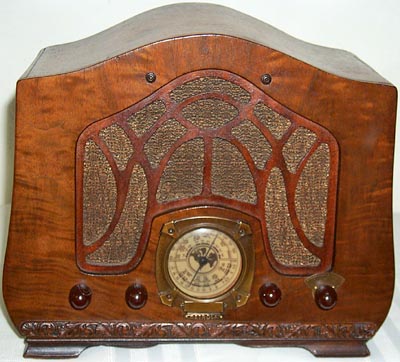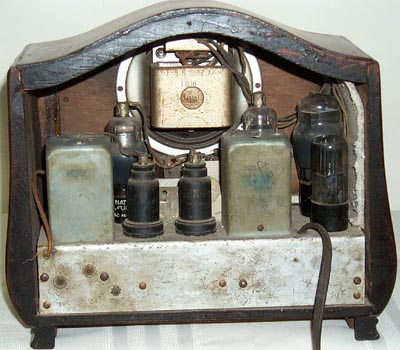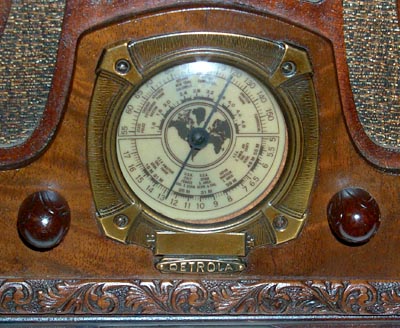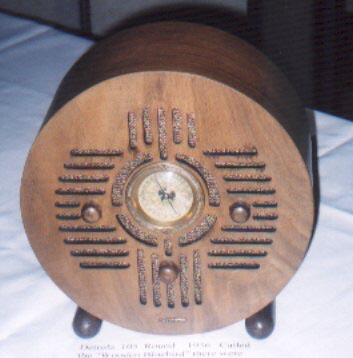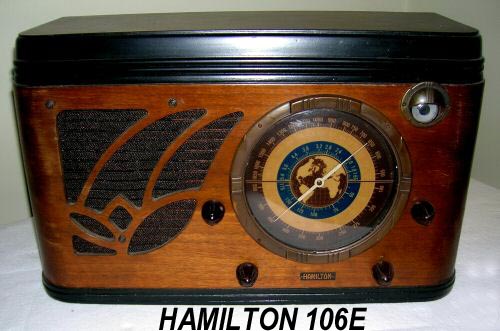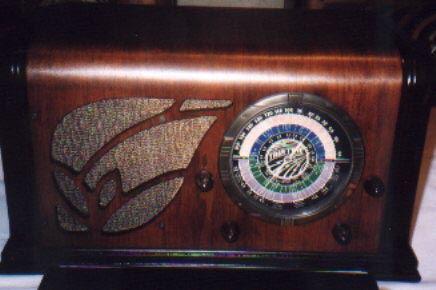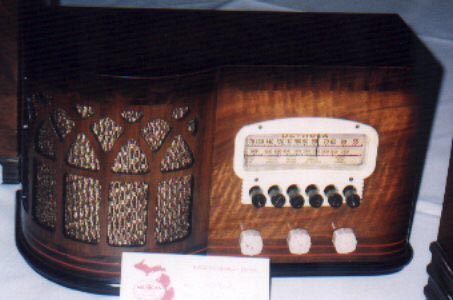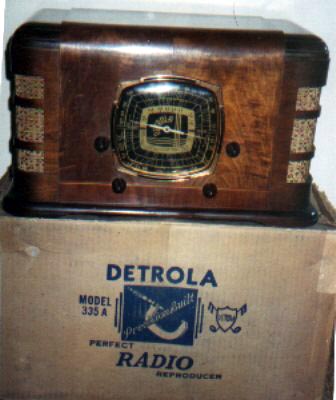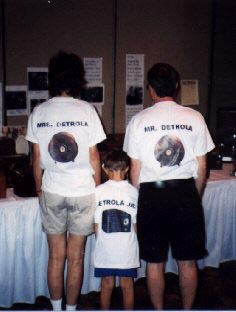

Detrola was the largest Michigan radio manufacturer, and was in business from 1931 until 1948. They grew from nothing to one of the largest radio manufacturers in just a few years time. They started out small, and had several locations before moving into a large factory building at the corner of Beard and Chatfield in Detroit. Detrola built radios under a variety of private brand names as well as under their own name. As much as 90% of production was private brand names. Detrola was a major supplier of radios for Western Auto, sold under the Truetone brand; and Sears & Roebuck, sold under the Silvertone brand. In the late 1930's, Detrola proclaimed in their advertising that they had the world's 6th largest output of radios. Many of the brand names they built were for regional or local stores and therefore had limited distribution as well as being very obscure. It is estimated that there are over 100 brand names that were built by Detrola, about 70 of these have been positively identified so far. Detrola made lots of very ordinary radios, and also some highly desirable radios in the eyes of today's collectors. The tiny Detrola PeeWee and Super PeeWee took the marketplace by storm when they were introduced. There are also some very unusual designs, such as the 1936 round radio sometimes referred to as the "Wooden Bluebird" as is it an obvious copy of the famous mirrored Sparton; and the highly Deco 1936 Presentation Desk Set. During WWII Detrola merged with the International Machine Company, and they assembled military equipment. The new name of the company became International Detrola. After the war one of their models, the 571, had over 52 brand names and at least 10 cabinet styles for this one model!!! There are several photos of 571's and much information about them as well as other postwar models on the second page of this site. There is also more information about Detrola Electric Tuning, and Network dial closeups on page two. In the late 1940's they also assembled Ford car radios before stopping radio production entirely.
Most radio collectors are not interested in consoles except for very unusual ones, as they take up too much room and are very difficult to transport across the country. In many cases the cost of shipping is greater than the value of the radio. There are only a few radio collectors who are interested in radios that have a phonograph included. Collectors also do not want radios that have been refinished or "repaired" by unqualified amateurs. Even plugging in a 60 year old set for a minute to see if it works can be fatal. Irreparable damage can be done in only a few seconds, so it is always best to resist the urge to plug in that old radio you found up in the attic or at the flea market. There are a number of capacitors in every radio, and they fail with age as well as from use, they go bad even if the radio has not been used for a long time. For safety reasons as well as to prevent further damage to other components, these capacitors should be replaced BEFORE the set is turned on. Leave the testing/repair/restoration of the radio to a skilled person, preferably a professional technician with long experience in the repair of tube type equipment. There are many people across the US who are qualified to repair tube type radios. In many cases the cost of properly repairing an old radio will exceed the value of the set. Sometimes tubes and knobs are missing, but almost all tubes can be easily obtained for reasonable prices, and there are suppliers who specialize in knobs, even some who are making reproduction knobs. Most radios that have not been tampered with can be repaired to work again, but in many cases it is better to use the set for display purposes only rather than to try to make it functional again. The great majority of older radios are valued in the under $100 range unless there is something very special or rare about them.


Mr.and Mrs. Detrola are really Dennis and Bonnie Smith. Detrola Jr. is our son Christopher. We got a lot of nice comments about the t-shirts we wore at the 1998 MARC Extravaganza, which were made for us by our friend Tammy Cavell. Chris thinks it is really cool that if someone searches on Google images for Detrola Jr, his picture above in the Detrola Jr. shirt will come up. I have been interested in the Detrola radio company since the late 1950's and have personally interviewed dozens of former employees. With help from family members, hundreds of hours of research have been done in an attempt to discover the history of this most unusual company. One of the former Detrola employees started calling me "Mr. Detrola" when I was about 9 or 10 years old because of my interest in the company and their products, and the name has stuck. I was very fortunate in locating a former Detrola manager who was with the company from almost the beginning until the last day, and also the woman who was in charge of the assembly line workers for a number of years. Their information cleared up a lot of questions about the actual design and manufacturing processes.
This family will always continue doing research on Detrola, so if you know of anyone still alive who worked there, or have any old documents related to the company, I would be most interested in the information. I am in the process of writing a book about the company and their products which should be completed in the very near future. Watch this website for further information.
